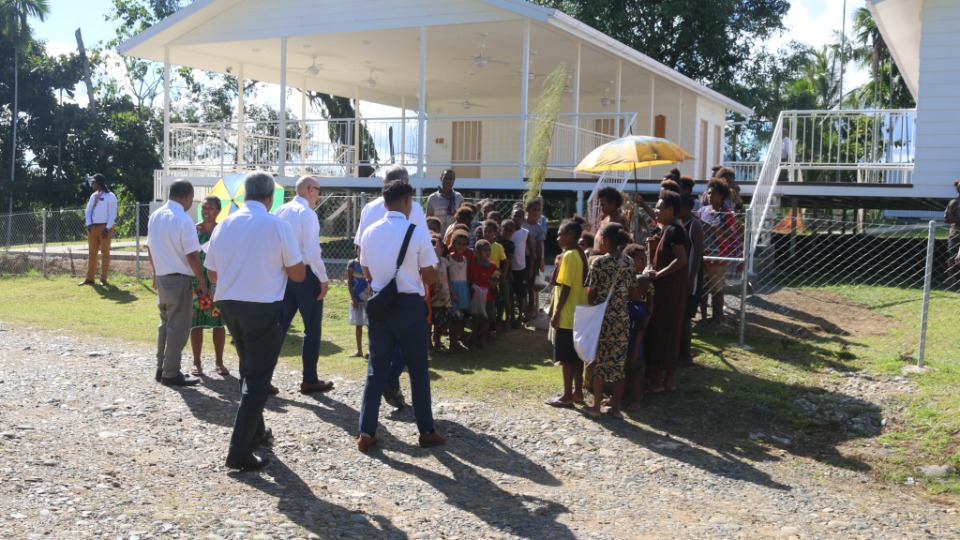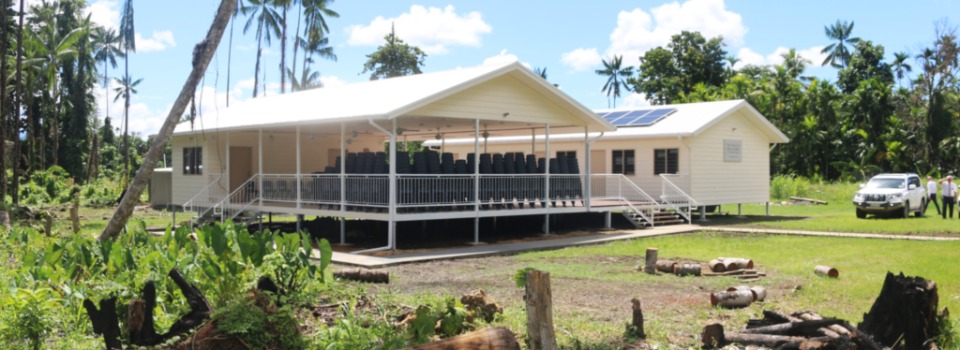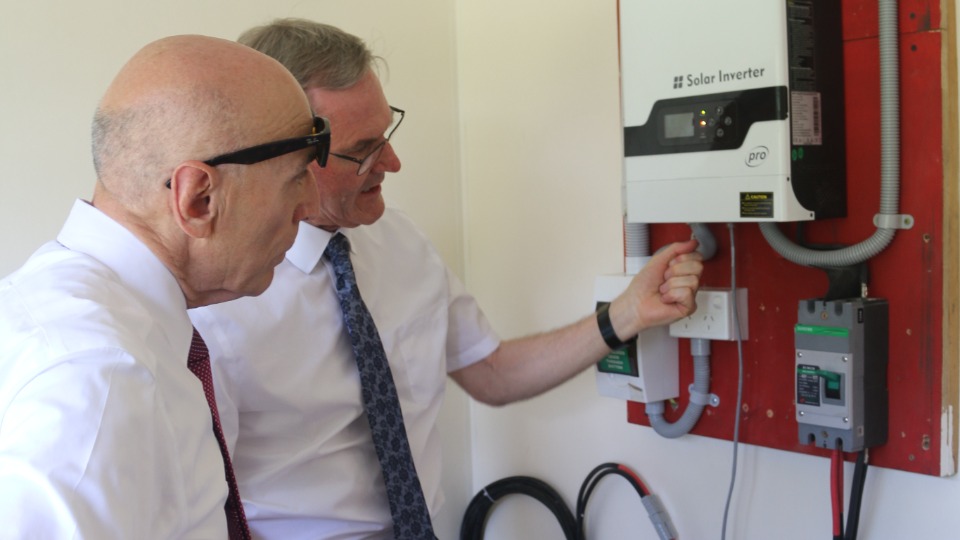Across the cities, towns, and villages of the South Pacific, The Church of Jesus Christ of Latter-day Saints is embracing innovative solutions to support both spiritual and temporal well-being.
By incorporating environmentally sustainable construction and maintenance practices into new meetinghouses, the Church is not only providing sacred spaces for members to worship, it’s also safeguarding and generating vital resources, blessing entire communities.

Sustainability-1.JPG
Church members and visitors gather at a new solar-powered meetinghouse in Papua New Guinea. January 22, 2025.© 2025 by Intellectual Reserve, Inc. All rights reserved.In a recent interview, Elder Peter F. Meurs, Pacific Area President of The Church of Jesus Christ of Latter-day Saints, noted that many new Church buildings have water collection systems. Without these systems, finding a clean water source is a struggle and often forces people to use contaminated water or to walk many kilometres every day to find water that’s suitable to use.
“We can collect water off the roofs into tanks,” Elder Meurs said. “In places like Papua New Guinea, Vanuatu, and Solomon Islands, you not only have sunshine, but you have lots of rain, so the tanks fill up quickly.”
“As we build a meetinghouse in a village, it gives them a very beautiful, clean water supply. It’s a little benefit of having a Latter-day Saint church in their village,” he said.

Sustainability-2.JPG
Church members and visitors gather at a new solar-powered meetinghouse in Papua New Guinea. January 22, 2025.© 2025 by Intellectual Reserve, Inc. All rights reserved.Another benefit that comes with many new buildings is a solar power system, replacing diesel generators with a sustainable energy source.
Such cost effectiveness and easy maintenance are significant in a place like Papua New Guinea where an estimated 85% of the population doesn’t have access to electricity.
At one meetinghouse in Queensland, Australia, the power bill is now 70% lower due to the use of solar panels. In the same area, 6 of 24 meetinghouses use solar power and consideration is being given to install solar on the remaining 18 buildings. By integrating solar power, these meetinghouses become beacons of both spiritual and physical light for the community.
In Kiribati, the Church has provided funding for solar-powered desalination plants to combat the contamination of freshwater sources due to rising sea levels. These new sources for fresh water save lives and improve livelihoods in the communities where they’ve been installed. “Now these islands have perfect water and better health as a result,” Elder Meurs said.

The Church’s commitment to sustainability aligns with its belief in stewardship, or sacred responsibility, over the earth. Bishop Gérald Caussé, Presiding Bishop of the Church, emphasized this principle, stating, “How can we honor and love Heavenly Father and Jesus Christ without honoring and loving Their creations?”
Through these and other initiatives, the Church continues to strengthen communities in the South Pacific, exemplifying the principle that discipleship includes caring for both people and the environment.